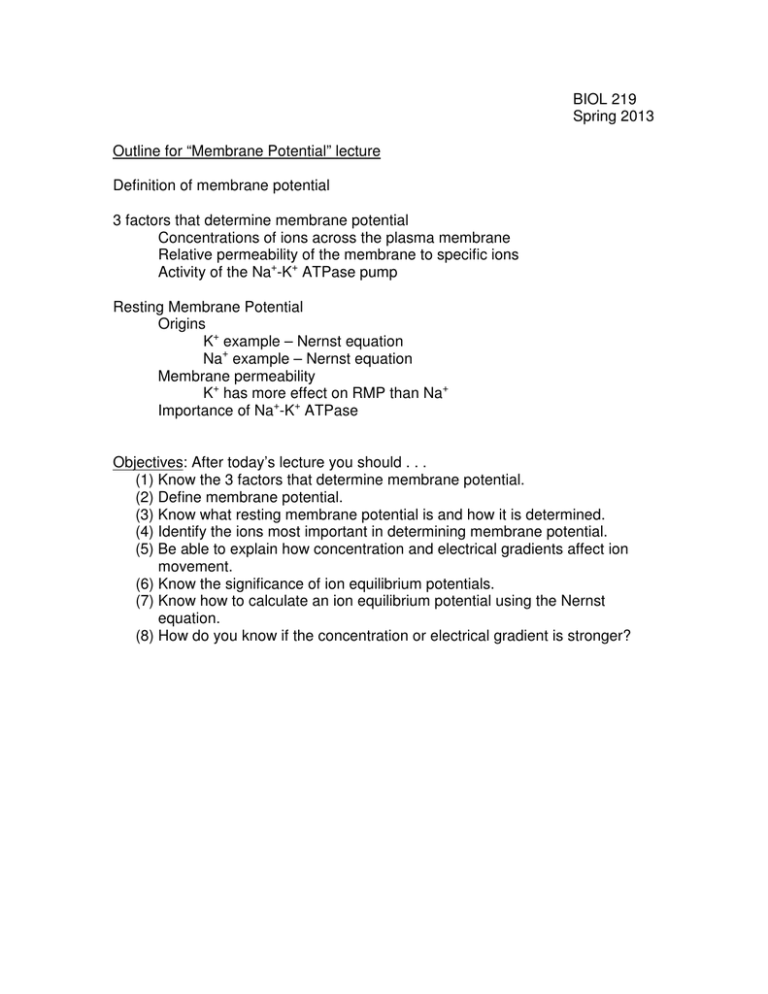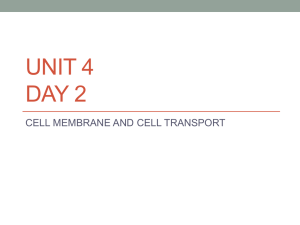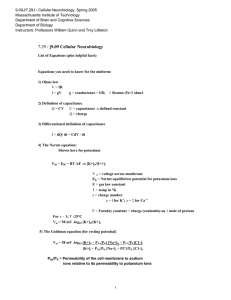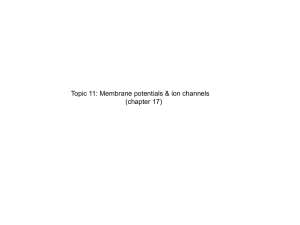BIOL 219 Spring 2013 Outline for “Membrane Potential” lecture
advertisement

BIOL 219 Spring 2013 Outline for “Membrane Potential” lecture Definition of membrane potential 3 factors that determine membrane potential Concentrations of ions across the plasma membrane Relative permeability of the membrane to specific ions Activity of the Na+-K+ ATPase pump Resting Membrane Potential Origins K+ example – Nernst equation Na+ example – Nernst equation Membrane permeability K+ has more effect on RMP than Na+ Importance of Na+-K+ ATPase Objectives: After today’s lecture you should . . . (1) Know the 3 factors that determine membrane potential. (2) Define membrane potential. (3) Know what resting membrane potential is and how it is determined. (4) Identify the ions most important in determining membrane potential. (5) Be able to explain how concentration and electrical gradients affect ion movement. (6) Know the significance of ion equilibrium potentials. (7) Know how to calculate an ion equilibrium potential using the Nernst equation. (8) How do you know if the concentration or electrical gradient is stronger?








